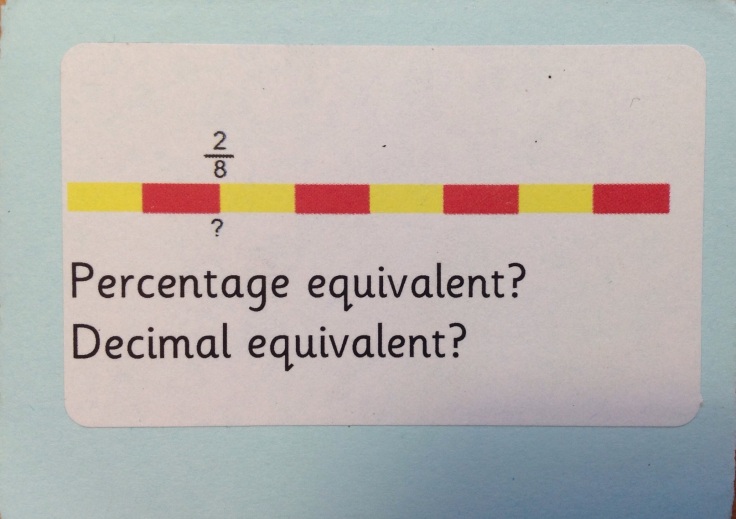In the last few weeks there has been a flurry of posts written on spacing, interleaving and retrieval practice. It seems that this flurry has in part been triggered by @miss_mcinerney’s Touchpaper problems. Two that stand out are Joe Kirby’s and Mark Miller’s. Both digest the research before summarising with great clarity what seems to be optimal conditions for learning. I first came across the ideas reading David Didau’s blog, and have been working on Year 6 maths planning to benefit from the effects of spacing, interleaving and retrieval practice. It’s split into 2 parts: longer term curriculum design and shorter term lesson planning.
Curriculum Design
This screenshot is a section of the Year 6 Spring Term overview. The overview is split into units of work which consist of two topics. Sometimes, these topics compliment each other in order to show children links between areas of maths: working walls depict these links and they are referred to often. Other times, there is no link between them. This is a first draft of a curriculum overview and although there are probably more meaningful combinations of topics, it will take some time to reflect and switch things around. In this instance, I’m not sure how significant the benefit would be to deliberate too much over this.
The superiority of spaced rather than blocked practice is well known, and this overview plans for spacing in two ways. Some topics are repeated regularly as additional teaching blocks. The Pareto Principle, or the ‘law of the vital few’ describes the imbalance of effects of different causes. The theory applied to this situation would suggest that twenty percent of the content of the curriculum provides eighty percent of the value: there are certain topics that have much greater value than others. Knowing number facts such as times tables as well as being able to calculate quickly and reliably would certainly be within that twenty percent. As such, these vital few topics are repeated often.
Day to Day Planning
The other way that spacing is set up is through the switching between the two topics in each unit of work. Deciding when to switch is contextual – a natural break in one topic is the switching point. For example, a few days on converting betweeen fractions and decimals before switching to working on calculating unknown angles would provide a few potentially fruitful opportunities. It gives the teacher a bit of time to assign any extra practice (perhaps for homework) to help some children to be ready for ordering fractions and decimals. It also gives the teacher a chance to delay feedback for a couple of days, which could be well worth experimenting with, as David Didau suggests here.
But what of the topics that are not in the vital few? These need to be spaced too if they are to be encoded into long term memory. A relic from the National Strategies is the oral / mental starter which could be tweaked to provide spacing and retrieval practice. Each lesson, an old topic is selected to work on where children use a model or image to practise recalling a concept, before working through a series of questions to practise recalling procedural knowledge. This not only spaces out learning but gives the teacher the opportunity to see what children can still do or what they have forgotten; to give feedback on known and likely misconceptions; and plan for revision sessions. In the example below, children had, within the last few weeks, been working on calculating the area of compound shapes. The success criteria that we developed at the time was shown on the screen and children used the images to recall the steps needed. After that, they had the opportunity to practise. The questions got progressively more difficult from left to right and children either chose to start from ‘column 1 or 2’ or were directed to the appropriate questions:
Factual recall is crucial in order to think with clarity about a concept. For example, if children are to be able to compare fractions, decimals and percentages, they have to be able to quickly recall conversion facts. For situations like these, the mental maths session would include individual use of flash cards, like these.
Children look at the prompt then say the decimal and percentage conversion. They turn the card over to check and make two piles. One pile of facts that they can reliably recall accurately, and one pile of facts that they have not yet internalised. When putting the cards away, the ‘wrong’ pile gets put on top to practise first next time. Often, having practised an area of maths, a short problem solving task is presented for children to work through, like in the screen shot below.
What next?
My organisation of the spacing is still fairly arbitrary. Whether there are optimal spacing times is not yet clear and certainly, trying to engineer optimum times would be difficult and perhaps not worth the opportunity cost, especially if it turns out to be non linear.







Wow great piece. I have organically being working more like this in the last few years having reached a point in my teaching career where I felt I could break free of the systems. Since moving to a new school this year I have gone further with this using starter questions and short starter tasks. Mike askew in his most recent books praises the ‘sleep on it’ element to maths learning and contradicts the attitude that learning always occurs within 1 hour (thank you ofsted). Will be visiting the links you mention.
LikeLike
Thanks for visiting, Samantha. What’s the title of the Askew book? Would be good to hear about your approach…
LikeLike
Hi
The title is Transforming Primary Mathematics. A great read although I had to avoid near going to sleep as it filled my brain with deep and exciting thoughts.
LikeLike
Reblogged this on The Echo Chamber.
LikeLike